
Creosote Bushes: The Scent of the Desert
Creosote bushes
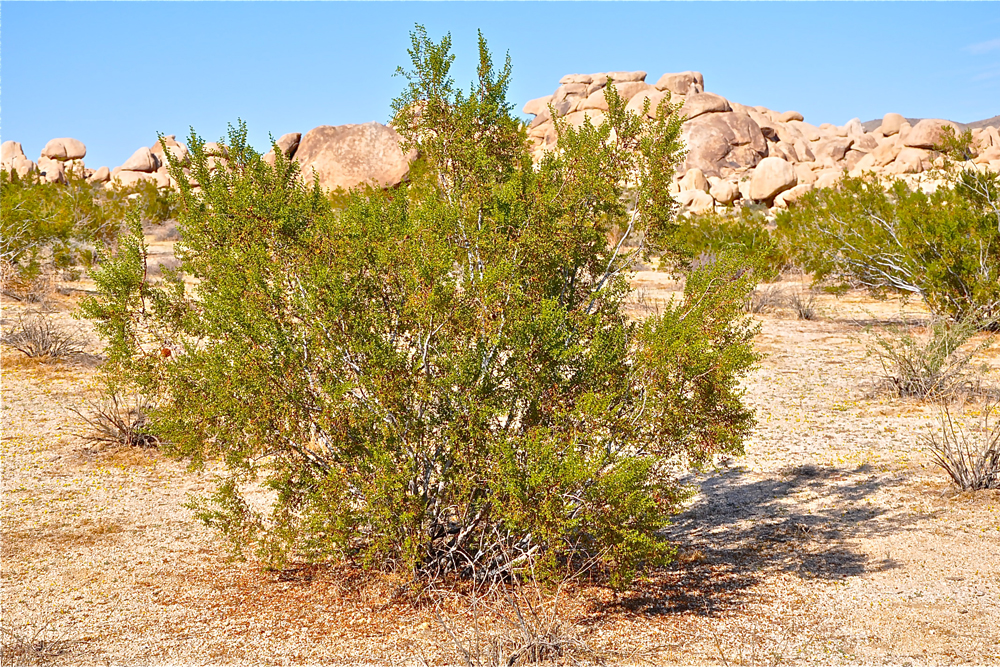
The creosote bush (Larrea tridentate) is an evergreen shrub that commonly grows at elevations under 5,000 feet (1,524 meters) in the lower Chihuahuan, Sonoran and Mojave Deserts of northern Mexico and the U.S. Southwest. It is a highly aromatic bush and is responsible for the distinctive odor that permeates these lands during periods of rainfall.
Distinct smell
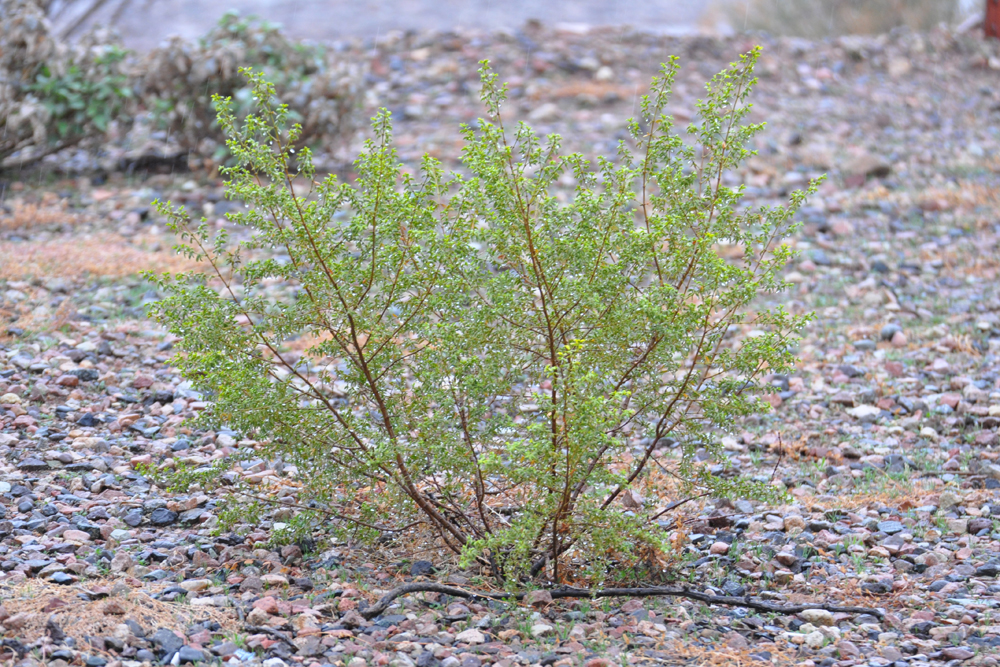
The uplifting smell comes from natural chemicals called phenolic compounds and other volatile oils found in and on the plant's leaves and stems that are quickly released during even the lightest of desert rain showers. Creosote bushes have nothing to do with the chemical creosote, which is distilled from wood or coal tar. In fact the plant is known in Sonora, Mexico, as "Hediodilla," which translates to mean "the little stinker." Another common name for the plant is "greasewood."
Complex leaves
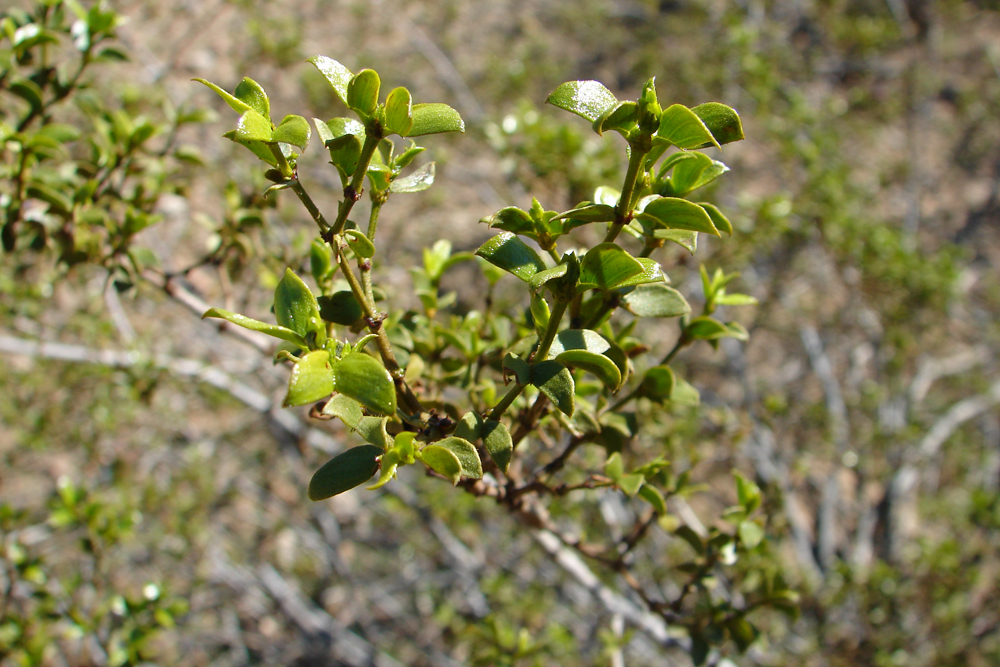
The leaves of the creosote bush are compound, with the two leaflets joining at the base. The leaves are dark green in color and shiny due to being covered with a layer of wax. They are less than 0.5 inches (1.27 centimeters) in length but uniquely thick. During times of extreme heat, the leaves will fold together and lessen the surface area exposed to transpiration (a process similar to sweating whereby plants lose water to the atmosphere through openings on the surface of leaves).
First bloom
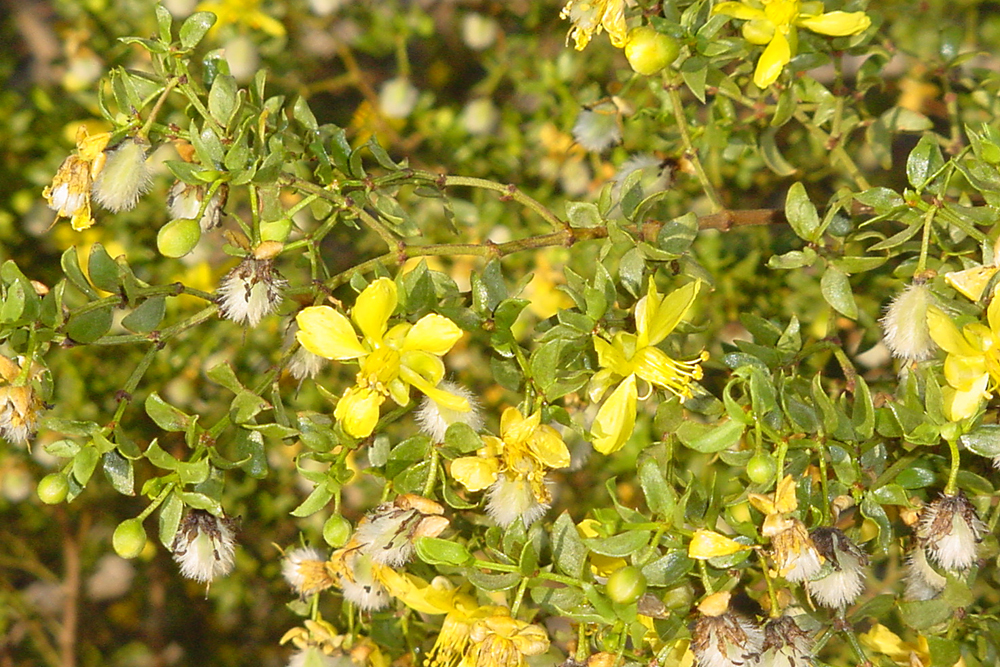
The creosote bush will flower anytime of the year after a rain, but December through late summer is the most common flowering time. The bright yellow flowers have five contorted petals and produce a white, fuzzy seedpod about 0.25 inch (0.635 cm) in size that holds five separate seeds. The bush is a member of the Zygophyllaceae (Caltrop) family.
Beauty and toughness
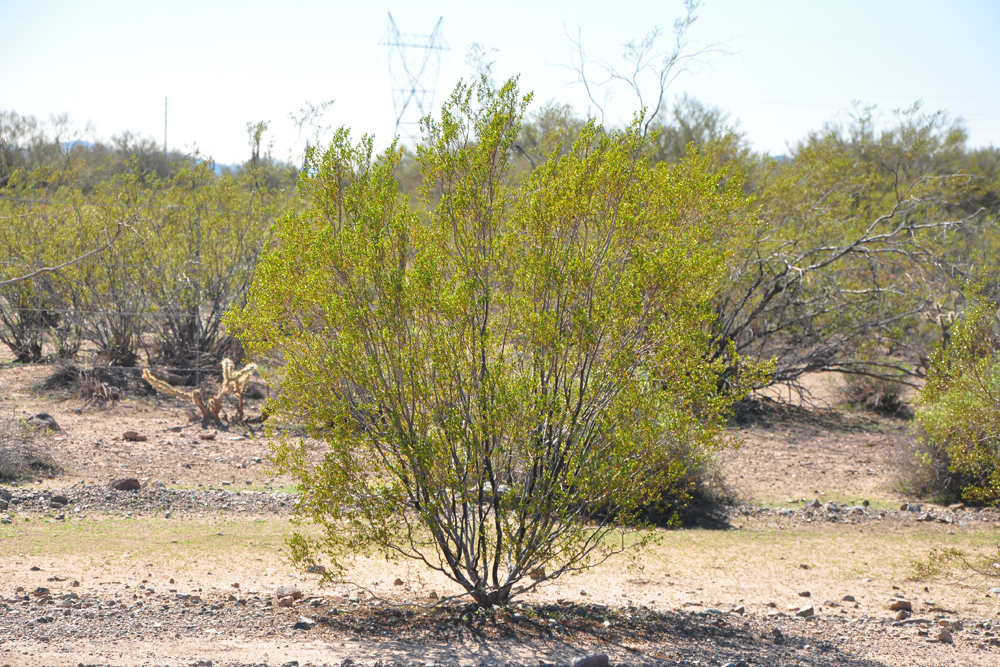
The creosote bush is believed to be the most drought-tolerant shrub in North America. Its waxy leaves can stand both extreme temperatures and dehydration. The bush can survive for up to two years without rainfall and flourishes in areas that annually receive less than 3 inches (7.62 cm) of rain.
Extensive root system
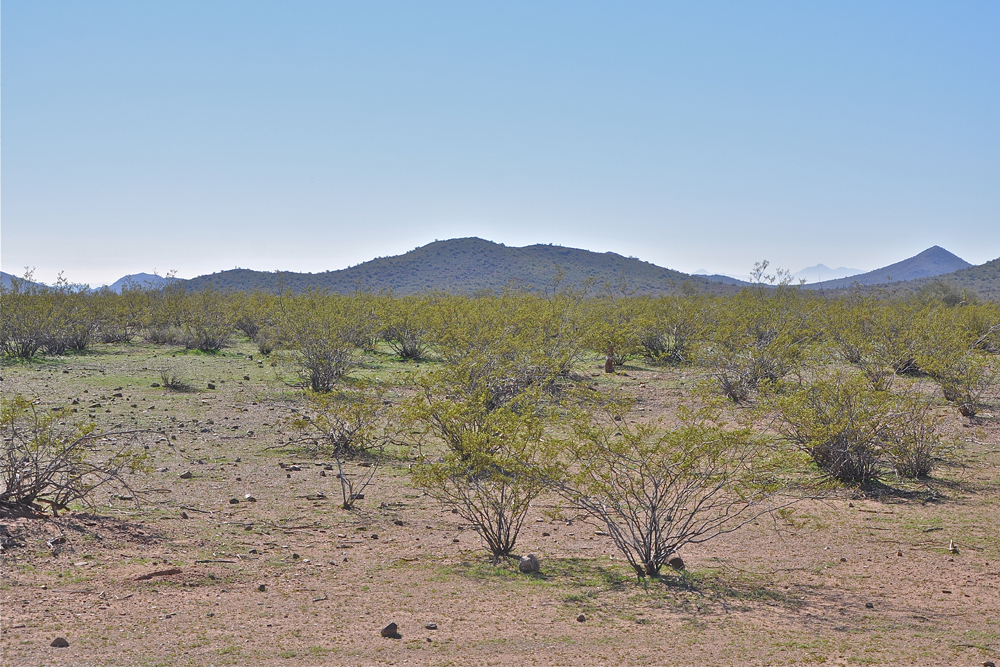
The creosote bush is the predominate plant of these desert ecosystems, estimated to be growing on some 35 million to 46 million acres of land. Its root system is extensive and the many chemical compounds found within it actually inhibit the growth of other plants, thus eliminating competition for precious water. Often, acres of creosote bushes produce a "garden-like" landscape, with the thousands of bushes appearing to be growing equally spaced apart.
Harsh home
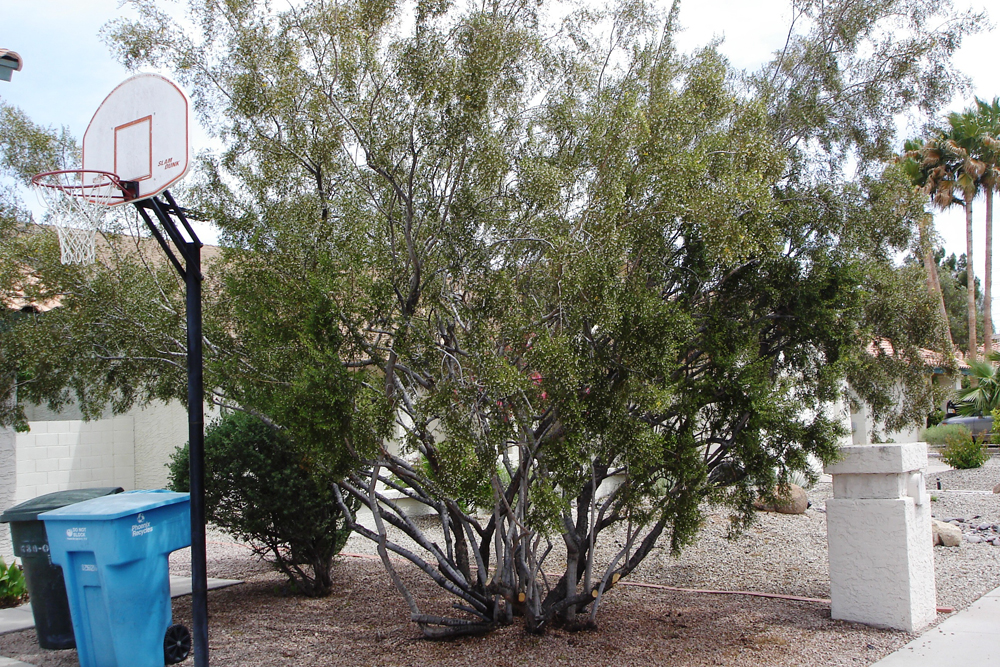
Most creosote bushes grow in their desert environment to between 3 to 4 feet (0.91 to 1.22 m) in height, with multiple stems growing from the root system. But when getting an abundance of water, such as in home landscaping, the bush can grow to a height of over 12 feet (3.66 m).
Sign up for the Live Science daily newsletter now
Get the world’s most fascinating discoveries delivered straight to your inbox.
Chemical warfare
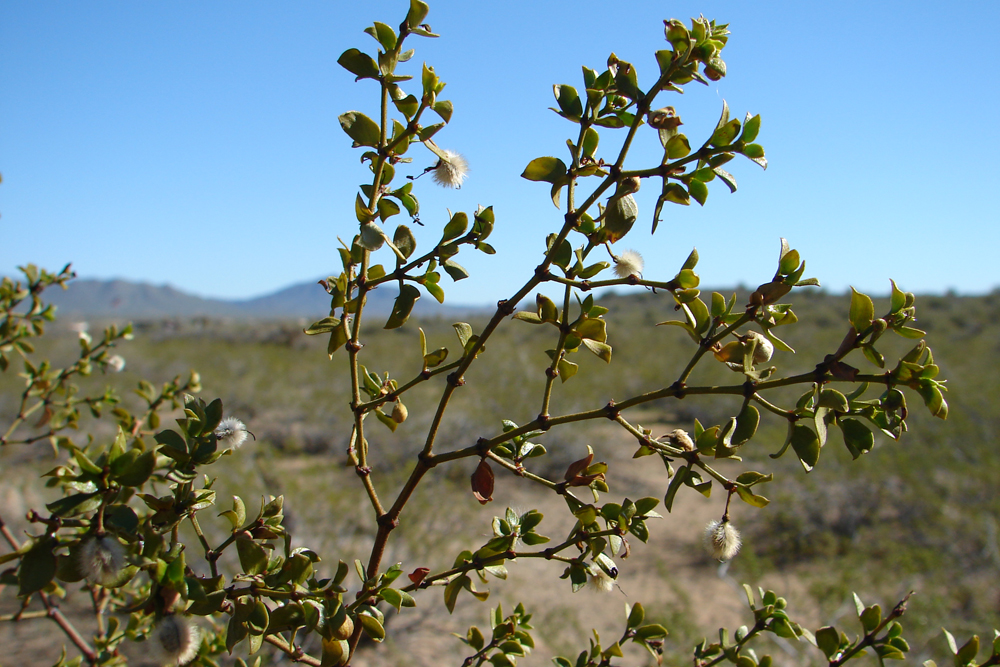
With so many chemical resins naturally occurring in its leaves, stems and roots, the creosote bush basically wages a form of chemical warfare on any other plant or animal with which it shares its environment. Desert dwelling herbivores tend to ignore and avoid it. However, with its foliage and stems being so resinous, the creosote bush is very vulnerable to wildfires.
Sharing the wealth
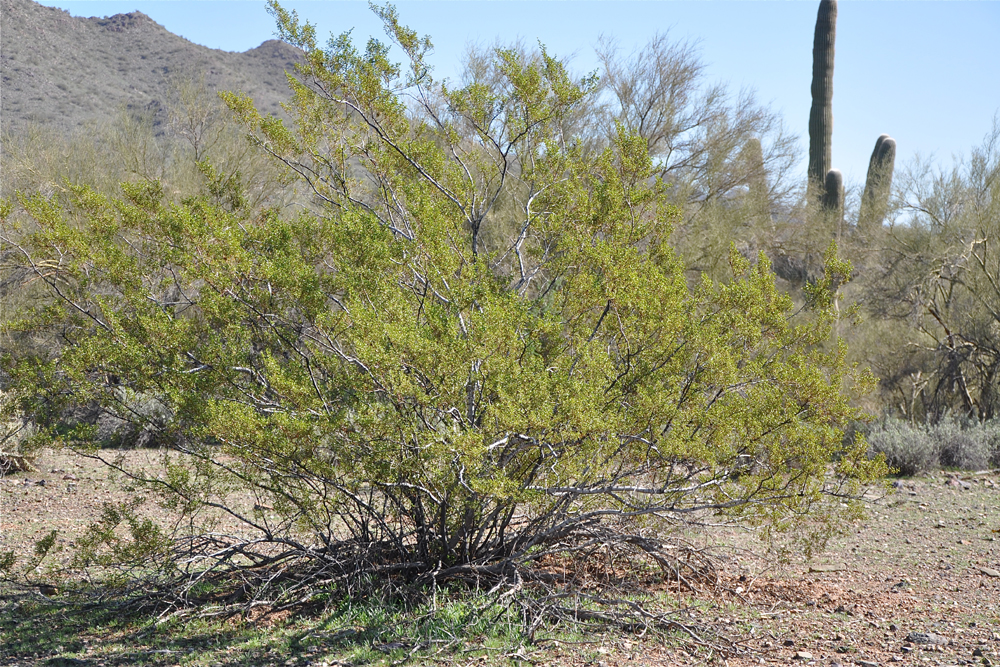
Insects are another story, though, with over 30 varieties of insects that live on or depend on the creosote bush, such as stinkbugs, scarabs, walking sticks and long-horned grasshoppers. A scale insect, Tachardiella larreae, lives on the creosote bush and produces a gum-like substance called lac. Lac was a very important substance for the Native American people who lived in these desert lands and used it as both a medicine and in the hardening of their crafted tools.
Use wisely
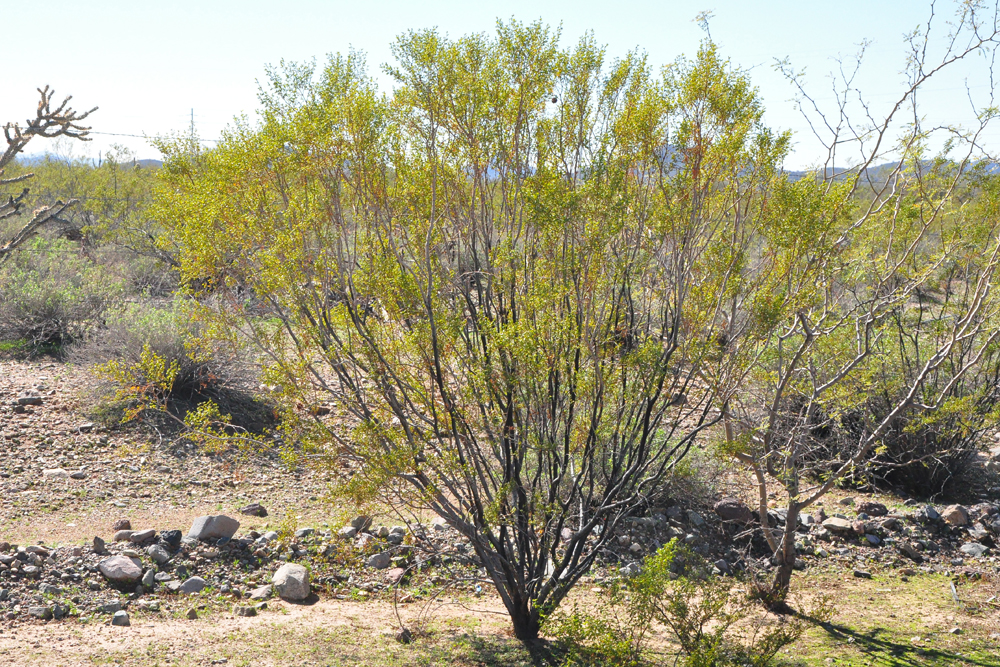
With such an abundance of resins, the creosote bush has long been known as a powerful, but potentially dangerous, herbal medicine. It has been used to help treat respiratory ailments, as an anti-inflammatory and anti-rheumatic treatment and to treat various gastrointestinal disorders. It has even been known to help with the pain of a toothache.
Designed for longevity

But the most amazing aspect of these unique desert plants just might be their longevity. They can produce asexually from shoots sent out from the root crown, creating an elliptical colony of bushes that generally surround remains of a dead plant. The surrounding creosote bushes are clones of the original bush that sprouted from a single seed.










